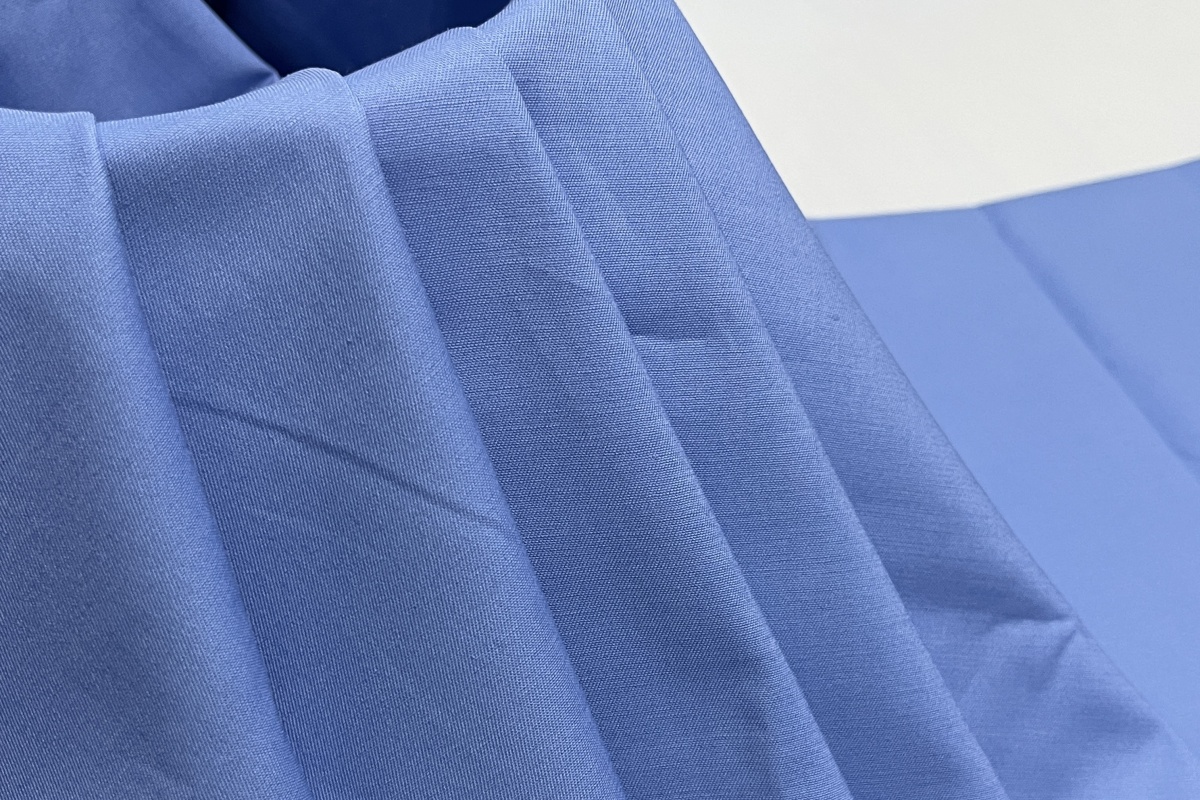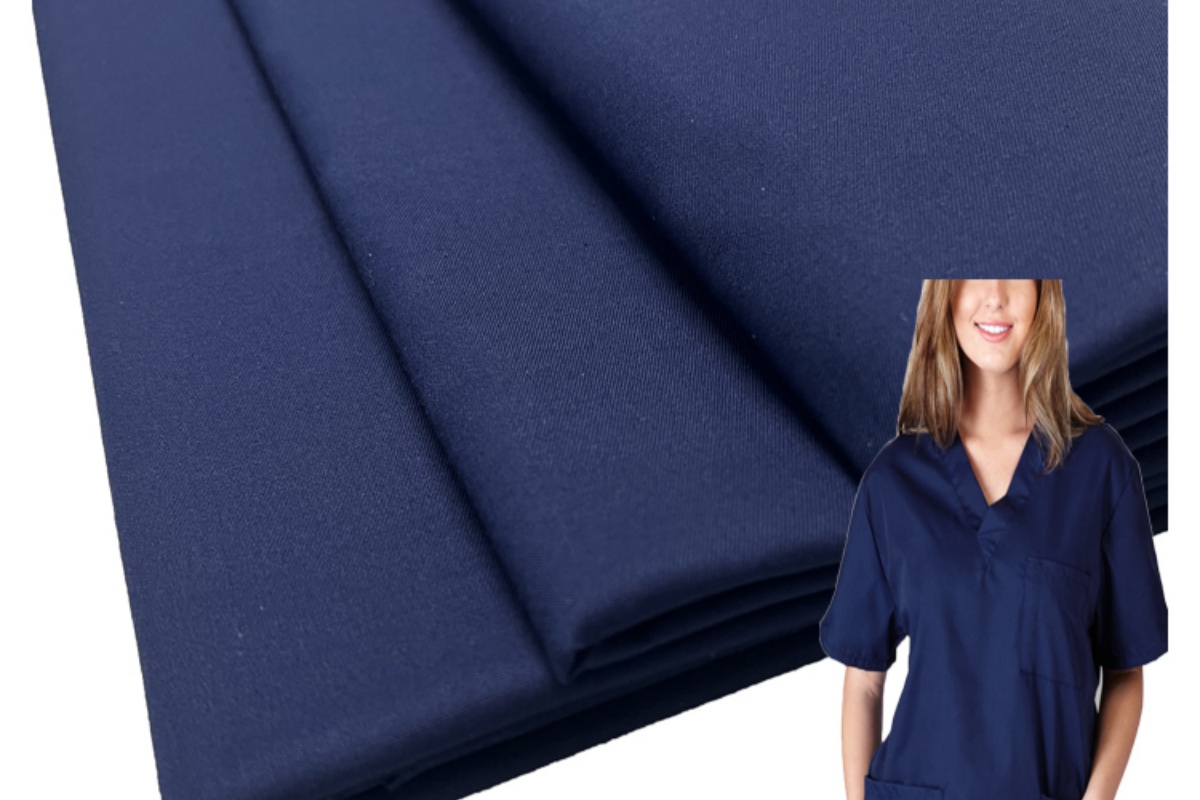Choosing the Right Fabric for Your Nursing Scrubs

I believe that selecting the appropriate nursing scrubs uniform fabric is essential for every healthcare professional. The medical uniform fabric must strike a balance between comfort, durability, and hygiene. A carefully chosen scrubs fabric can resist bacteria, wick moisture, and repel water. These characteristics ensure that nurses remain focused and perform efficiently, even during long shifts in challenging environments, all while wearing the best nurse uniform fabric available.
Key Takeaways
- Choose scrubs made from cotton or cotton-polyester blends for all-day comfort. These fabrics are soft, breathable, and allow for natural movement during long shifts.
- Opt for durable materials like polyester or cotton-polyester blends if you frequently wash your scrubs. These fabrics resist wear and tear, maintaining their shape and color over time.
- Select antibacterial fabrics for hygiene and infection control in high-risk environments. These materials reduce bacterial growth and help keep your scrubs fresh and odor-free.
Key Factors to Consider
Comfort and fit
I always prioritize comfort when selecting nursing scrubs. A well-fitted uniform ensures ease of movement, which is essential during long shifts. Fabrics like cotton or blends with spandex provide flexibility and softness. These materials reduce irritation and allow me to focus on patient care without distractions. Proper fit also prevents unnecessary adjustments, keeping me efficient throughout the day.
Durability and longevity
Durability is non-negotiable for nursing scrubs uniform fabric. Frequent washing and exposure to harsh cleaning agents can wear out low-quality fabrics. I recommend polyester or cotton-polyester blends for their resilience. These materials maintain their structure and color even after repeated use, ensuring the scrubs last longer and remain professional-looking.
Breathability and moisture-wicking
Breathable fabrics are a lifesaver in high-pressure environments. I prefer materials that wick moisture away, such as technical fabrics or cotton blends. These fabrics keep me dry and comfortable, especially during physically demanding tasks. Proper ventilation also prevents overheating, which is crucial in maintaining focus.
Hygiene and antimicrobial properties
Hygiene is critical in healthcare settings. I look for fabrics with antimicrobial treatments to reduce the risk of bacterial growth. Antibacterial nursing scrubs uniform fabric not only protects me but also minimizes the spread of infections. This feature is especially important when working in environments with high exposure to pathogens.
Maintenance and ease of care
Easy-to-maintain scrubs save time and effort. I choose fabrics that resist wrinkles and stains, such as polyester blends. These materials require minimal ironing and are quick to dry, making them ideal for busy schedules. Low-maintenance fabrics ensure my scrubs always look clean and professional.
Comparison of Common Nursing Scrubs Uniform Fabrics
 Cotton
Cotton
I find cotton to be one of the most comfortable fabrics for nursing scrubs. Its softness and breathability make it ideal for long shifts. Cotton absorbs moisture well, which helps me stay cool in warm environments. However, it wrinkles easily and may shrink after washing. While cotton feels great, it lacks the durability needed for frequent laundering with harsh detergents.
Polyester
Polyester stands out for its durability and resistance to wear and tear. This fabric holds its shape and color even after multiple washes. I appreciate how it resists wrinkles and dries quickly, saving me time during busy weeks. On the downside, polyester is less breathable than cotton, which can make it feel warm during intense shifts. Despite this, its low-maintenance nature makes it a practical choice.
Cotton-polyester blends
Blended fabrics combine the best of both worlds. Cotton-polyester blends offer the softness of cotton with the durability of polyester. I like how these blends resist wrinkles and shrinkage while remaining breathable. They also wick moisture better than pure cotton. For me, this balance makes them a versatile option for nursing scrubs uniform fabric.
Technical fabrics (e.g., spandex blends)
Technical fabrics, such as those blended with spandex, provide excellent flexibility. I rely on these fabrics when I need unrestricted movement during physically demanding tasks. They also wick moisture effectively, keeping me dry and comfortable. However, technical fabrics can be more expensive than traditional options. Their advanced features justify the cost for those seeking premium performance.
Antibacterial and antimicrobial materials
Antibacterial fabrics are essential for maintaining hygiene in healthcare settings. These materials reduce bacterial growth, which helps protect me and my patients. I prefer scrubs made with antimicrobial treatments when working in high-risk environments. They also resist odors, ensuring I feel fresh throughout the day. While these fabrics may cost more, their hygiene benefits make them worth considering.
Pros and Cons of Each Nursing Scrubs Uniform Fabric
Cotton
I appreciate cotton for its natural softness and breathability. It feels gentle on the skin, making it a great choice for long shifts. Cotton absorbs moisture effectively, which helps me stay cool in warm environments. However, I’ve noticed that it wrinkles easily and can shrink after washing. Its durability also falls short when exposed to frequent laundering with strong detergents. While cotton excels in comfort, it may not be the best option for demanding work environments requiring heavy-duty fabrics.
Pros:
- Soft and breathable
- Comfortable for extended wear
- Absorbs moisture well
Cons:
- Wrinkles and shrinks easily
- Lacks durability for frequent washing
Polyester
Polyester stands out for its resilience. I rely on it when I need scrubs that can withstand repeated washing and maintain their shape. It resists wrinkles and dries quickly, which saves me time. However, polyester doesn’t breathe as well as cotton, and it can feel warm during intense shifts. Despite this, its low-maintenance nature and durability make it a practical choice for busy healthcare professionals.
Pros:
- Highly durable and wrinkle-resistant
- Quick-drying and low maintenance
- Retains color and shape after multiple washes
Cons:
- Less breathable than natural fabrics
- Can feel warm during high-pressure tasks
Blends
Blended fabrics, like cotton-polyester mixes, offer a balanced solution. I find these blends combine the softness of cotton with the durability of polyester. They resist wrinkles and shrinkage while providing moderate breathability. Blends also wick moisture better than pure cotton, keeping me comfortable during long hours. However, they may not match the flexibility of technical fabrics.
Pros:
- Balanced comfort and durability
- Resists wrinkles and shrinkage
- Moderate breathability and moisture-wicking
Cons:
- Less flexible than technical fabrics
- May not feel as soft as pure cotton
Technical fabrics
Technical fabrics, such as spandex blends, provide unmatched flexibility. I prefer these when I need unrestricted movement for physically demanding tasks. They wick moisture effectively and keep me dry throughout the day. However, these fabrics tend to be more expensive. For those seeking premium performance, the investment is worthwhile.
Pros:
- Excellent flexibility and stretch
- Superior moisture-wicking properties
- Ideal for active and demanding tasks
Cons:
- Higher cost compared to traditional fabrics
- May not suit all budgets
Antibacterial fabrics
Antibacterial fabrics are essential for maintaining hygiene in healthcare settings. I choose these when working in high-risk environments. They reduce bacterial growth and resist odors, ensuring I feel fresh throughout my shift. Some also feature water-repellent properties, adding an extra layer of protection. While these fabrics can be more expensive, their hygiene benefits outweigh the cost.
Pros:
- Reduces bacterial growth and odors
- Enhances hygiene and infection control
- Often includes water-repellent features
Cons:
- Higher price point
- Limited availability in some styles
Recommendations Based on Specific Needs
For all-day comfort
I always prioritize comfort when selecting scrubs for long shifts. Cotton or cotton-polyester blends work best for me. These fabrics feel soft against the skin and allow for natural movement. I also prefer scrubs with a touch of spandex for added flexibility. Breathable materials prevent discomfort caused by overheating, especially during physically demanding tasks. Choosing the right nursing scrubs uniform fabric ensures I stay focused and comfortable throughout the day.
For durability and frequent washing
Durability becomes essential when scrubs face constant washing with strong detergents. Polyester and cotton-polyester blends excel in this area. These fabrics resist wear and tear, maintaining their shape and color even after repeated laundering. I also appreciate how they dry quickly, saving time during busy weeks. Investing in durable scrubs reduces the need for frequent replacements, making them cost-effective in the long run.
For hygiene and infection control
In high-risk environments, I rely on scrubs made from antibacterial fabrics. These materials inhibit bacterial growth, reducing the risk of infections. Some also feature water-repellent properties, which add an extra layer of protection against spills. Antimicrobial treatments ensure my scrubs remain fresh and odor-free, even during long shifts. For me, these features are non-negotiable when hygiene is a top priority.
For hot or humid environments
Working in hot or humid conditions requires scrubs that keep me cool and dry. I prefer lightweight, moisture-wicking fabrics like technical blends or cotton-polyester mixes. These materials draw sweat away from the skin, preventing discomfort caused by dampness. Breathable fabrics with proper ventilation also help regulate body temperature. Choosing the right fabric ensures I stay comfortable, even in challenging climates.
Trends and Innovations in Nursing Scrubs Uniform Fabrics
 Sustainable and eco-friendly materials
Sustainable and eco-friendly materials
I’ve noticed a growing demand for sustainable nursing scrubs. Many manufacturers now use eco-friendly materials like organic cotton, bamboo fibers, and recycled polyester. These fabrics reduce environmental impact while maintaining comfort and durability. I appreciate how bamboo-based scrubs feel soft and breathable, making them ideal for long shifts. Recycled polyester offers the same resilience as traditional polyester but with a smaller carbon footprint. Choosing sustainable options allows me to support environmental conservation without compromising on quality.
Smart fabrics with advanced features
Smart fabrics have revolutionized the way I view nursing scrubs. Some materials now include advanced features like moisture-wicking, odor resistance, and even temperature regulation. I’ve tried scrubs with embedded antimicrobial treatments that actively reduce bacterial growth. These fabrics enhance hygiene and protect me in high-risk environments. Water-repellent finishes also prevent spills from soaking through, keeping me dry and comfortable. Smart fabrics combine functionality with innovation, making them a game-changer for healthcare professionals.
Customizable and fashion-forward options
Modern nursing scrubs have become more than just functional uniforms. I’ve seen customizable options that allow me to choose colors, patterns, and even embroidery for a personal touch. Fashion-forward designs now incorporate flattering cuts and stylish details without sacrificing practicality. Some brands even offer stretch panels for added flexibility. These innovations let me express my personality while maintaining a professional appearance. Customizable scrubs ensure I feel confident and comfortable throughout my shift.
Selecting the right nursing scrubs uniform fabric ensures comfort, durability, and hygiene during demanding shifts. Matching fabric to specific needs, like antibacterial properties or moisture-wicking, enhances performance. Exploring innovations, such as sustainable or water-repellent materials, offers better functionality. Thoughtful choices improve both professional appearance and daily comfort.
FAQ
What makes antibacterial fabrics essential for nursing scrubs?
Antibacterial fabrics reduce bacterial growth, enhancing hygiene and infection control. I rely on them to stay protected in high-risk environments while maintaining a fresh, odor-free uniform.
Are water-repellent scrubs worth the investment?
Yes, water-repellent scrubs prevent spills from soaking through, keeping me dry and comfortable. They add an extra layer of protection, especially in fast-paced healthcare settings.
How do I choose the best fabric for hot environments?
I prefer lightweight, moisture-wicking fabrics like technical blends or cotton-polyester mixes. These materials keep me cool and dry, even in humid conditions.
Post time: Jan-10-2025
